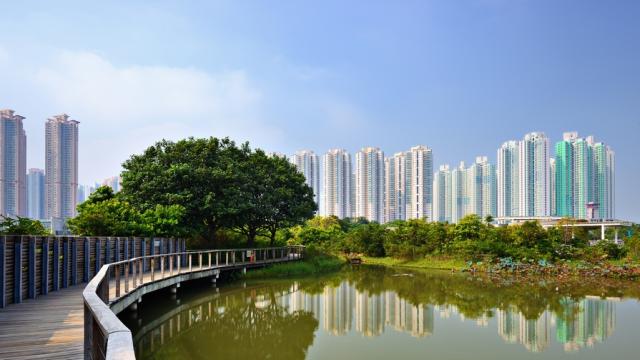Planning for anything beyond our own lifespans is tough work — not only does it force us to acknowledge our pitifully brief lives, but what we think is a good solution today might be making things worse in the long run. And according to some scientists, that’s exactly what’s happening with how we’re protecting our cities from rising tides.
A pair of studies in Science this week look at the way cities in coastal areas are preparing for the cataclysmic flooding and storms that will threaten them over the next few centuries. Their conclusions are both terrifying and heartening — let’s take a look.
Why Richer Countries Will Get More Vulnerable
Conventional wisdom would suggest that countries that are acting now to protect themselves from flooding with big geo-engineering projects will be better off down the road. But one Science study finds that these sweeping engineering projects aren’t long-term insurance.
Led by City University of New York’s Zachary D. Tessler, the study looks at important urban deltas all over the world — think the Pearl River Delta, or the Mississippi. It’s no coincidence that so many important cities are situated on the flood plains, since they’re perfectly located at points where the ocean meets the coastline. That means some of the largest and fastest-growing urban clusters on Earth sit on vulnerable deltas. Some of these cities are rich, others are not — and many of those with larger GDPs have already spent billions building flood-proofing infrastructure and changing the very environment to protect themselves.
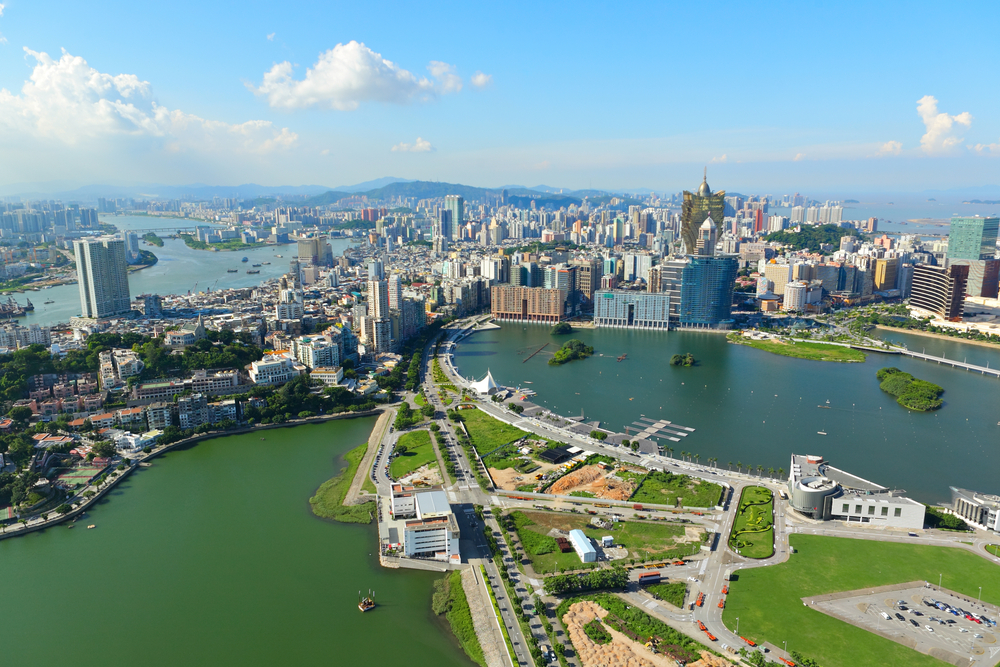
Macau on the Pearl River Delta, by leungchopan
But do rich countries that are already building flood infrastructure end up being better protected down the road? Tessler and his co-authors mapped 48 delta regions based on their level of flood risk and the amount of investment capital they had to pour into large-scale flood infrastructure. Then, they ran those regions through a scenario where energy costs and labour costs go up in the future.
What they found was contradictory: While every delta got more vulnerable, it was the richer, higher-GDP deltas that were the most at risk. Here’s their risk map for the future:
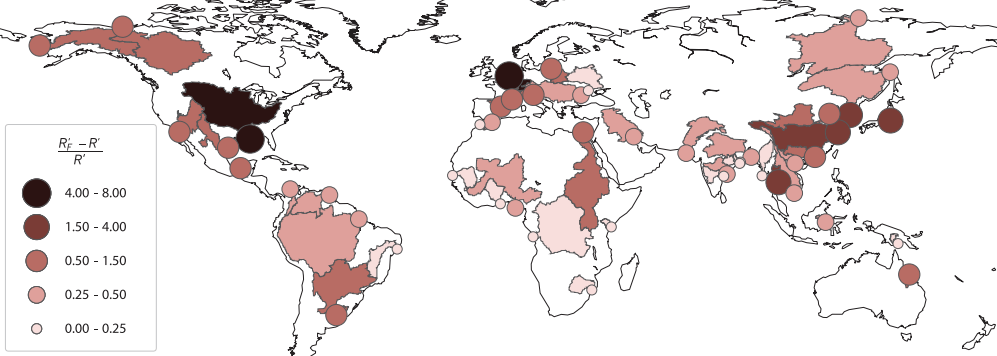
So just because a region is spending on flood-proof infrastructure doesn’t mean it will be better off when a big one hits.
Our Mega-Projects Are Actually Mega-Risky
Perhaps it has something to do with the way cities have traditionally approached designing these systems.
Stijn Temmerman and Matthew L. Kirwan, of the University of Antwerp and the College of William and Mary respectively, discuss flood engineering in their own Science study published online today. The duo conclude that the way we’re geo-engineering our coastal cities right now is only good for the next few decades — but in a century or two, our designs will be working against us. Think about it like this: A delta in nature deals with flooding thanks to the many channels and marshlands that can handle being inundated with water. When those floods happen, they bring mud up to the wetlands, replenishing the level of dry land.
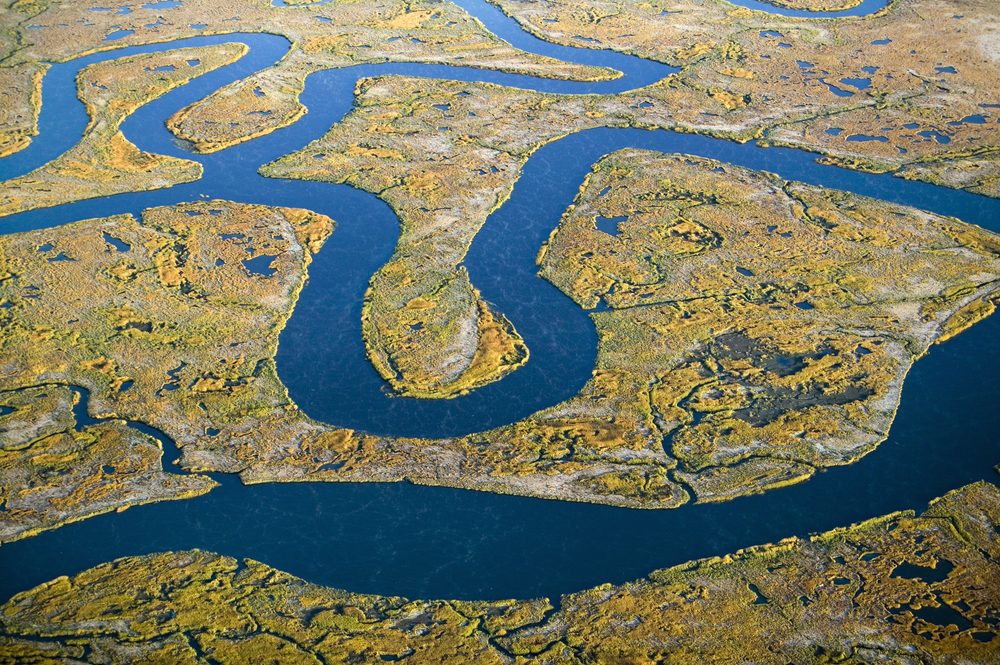
Maine wetlands by Joseph Sohm
It’s a natural process, and one that modern engineering has drastically screwed up. Now, we’ve left nowhere for the water to go during a flood — and also blocked off the process of sand and mud building back up along the coastline. Just look at the extraordinarily rapid loss of coastline in Louisiana. In short, we’ve engineered nature’s own flood-proofing system right our of our settlements. “Conventional engineering thus unintentionally exacerbates long-term flood risks and compromises the sustainability of delta communities,” the duo conclude.
But here’s the great thing about realising we’re doing this all wrong: Nature already showed us how to do it right. Temmerman and Kirwan point to the growing movement to use nature-based flooding solutions to protect low-lying cities. We’ve written about a few of these, too: Just look at the Netherlands’ own plan, called Room for the River, which is creating almost 40 new infrastructure projects that seek to create room for water, rather than block it out with dams or dykes. The idea is to allow controlled flooding, rather than creating a situation where a single system blocks the tide completely — setting a city up for a massive failure.
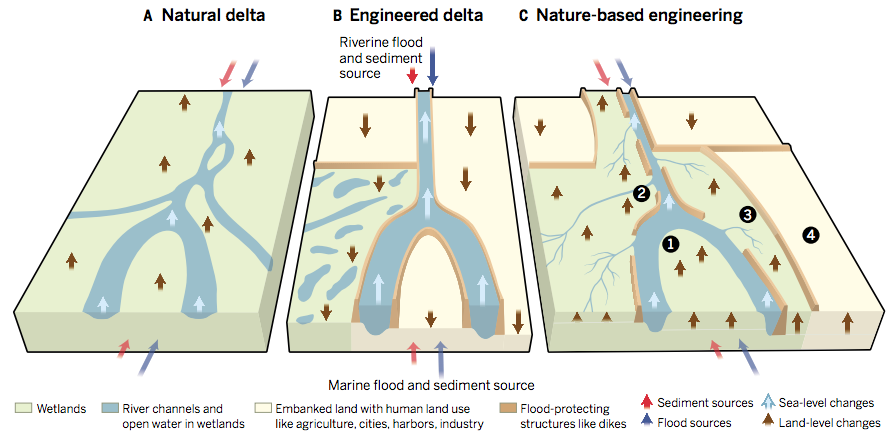
If you need more proof that pressing reset is a better solution, the authors point to Bangladesh. There, a number of dikes have been breached accidentally — as in, they have failed — but the resulting flooding has caused “rapid elevation gain” due to the natural process that brings new soil and sand up to the coastline. Now, scientists want to breach these dikes on a regular basis, they say.
Though one study looks at socioeconomics of flood mitigation and the other looks at design and ecology, both of these papers come to the same conclusion: That we can fight nature and win for a few years, but ultimately we have to follow the lead of the natural world if we want to design sustainable flood-proofing systems.
Lead image: High rise apartments above Wetland Park in Hong Kong, China, by Sean Pavone.
